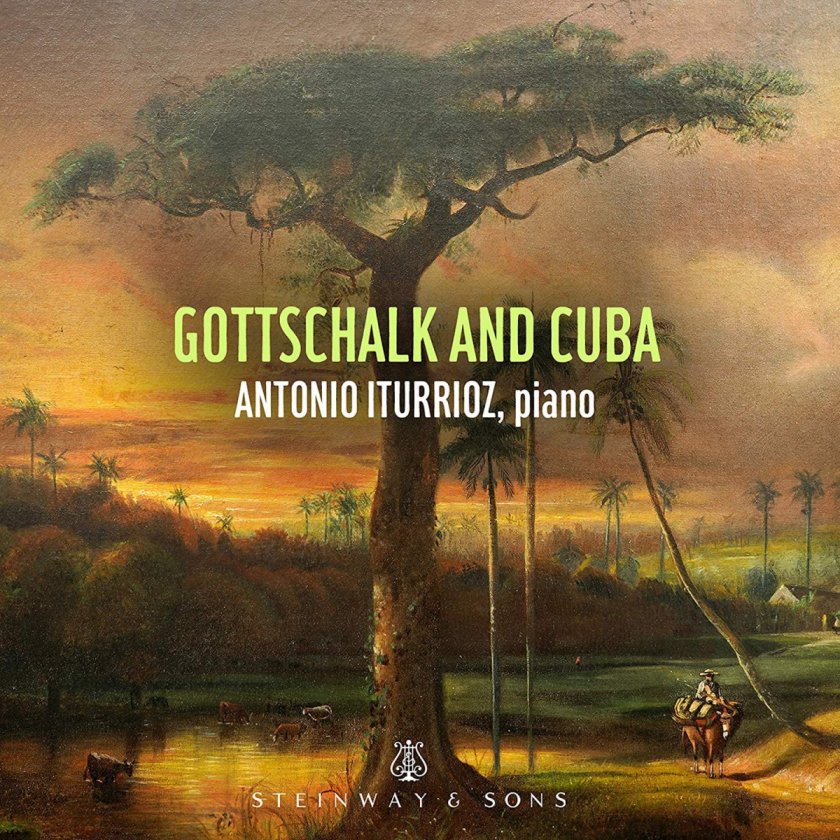I've posted about this album on Amazon, but, with the death of Andre Watts earlier this year, I thought I would post my comments on this site too. It turns out that Watts was a fan of this particular album, and I thought I would bring it to folks' attention once again:
Gottschalk and Cuba is an album which traces the influence of Louis Moreau Gottschalk on the music of Cuba for a one-hundred-year period: the earliest piece, Gottschalk's own "El Cocoye" dates from 1854, while the latest, Ernesto Lecuona's "Siempre en Mi Corazon", was recorded by the composer in RCA's New York studios in 1954 - so there's the 100 years. In between, we meet such personages as Manual Saumell (one of the earliest Cuban composers, and one who actually influenced Gottschalk - he sometimes signed his name "El Timbalero", "The Timpanist"), Nicolas Ruiz Espadero (Gottschalk's best friend in Havana), Ignacio Cervantes (who studied with Gottschalk for a while), Hubert de Blanck (a Dutch composer who settled in Cuba and was friends with Espadero and Cervantes - and who taught Ernesto Lecuona), Ernestina Lecuona y Casado (Ernesto's sister and a prolific composer in her own right).
But beyond this grand overview of Gottschalk-related piano music from Cuba, the pianist, Antonio Iturrioz (who himself was born in Cuba, although he moved to the Palo Alto area with his family when he was only seven), has included a couple of world-premiere transcriptions. Perhaps the best known of these is the piano solo version of Gottschalk's "Night in the Tropics" symphony. This is the first time that the entire symphony has been performed in a solo piano version. There WAS an existing solo piano transcription of the symphony's first movement by Gottschalk's colleague, Arturo Napoleao dos Santos, but this transcription left out one of the themes (!) in this movement. Iturrioz put the theme back in, so that the movement is now complete in its solo piano form. As for the second movement, the Iturrioz performance heard on this album marks its first appearance as a solo transcription, and thus allows us to hear the entire symphony in a piano solo transcription for the first time. (There was a two-piano transcription by Nicolas Ruiz Espadero, but of course the solo version on this album is much more fearsome in its technical demands!)
Iturrioz's wonderful transcriptions (made in conjunction with David de Grazia) also include Lecuona's afore-mentioned "Siempre en Mi Corazon", as well as his "Palomitas Blancas" from the same 1954 RCA sessions. These note-for-note transcriptions were made just from listening to the Lecuona recordings, since Lecuona himself never published them or even wrote them down. (They were originally songs for voice and piano.)
Another favorite track of mine is the song by Lecuona's sister, Ernestina, called "Amor Lejano" - the booklet notes compare this piece to Gottschalk's own, celebrated "The Dying Poet". Besides her own compositional output, the notes also mention that Ernestina founded a women's orchestra in Cuba (in 1937!).
The whole album contains much beautiful music, made all the more so by the excellent engineering and by Iturrioz's own beautifully nuanced performances. In contrast to some recordings, Iturrioz does not "push" the music towards overt, virtuosic displays. Instead, he keeps his tone very beautiful, no matter how complicated the pianistic texture gets! Iturrioz's refusal to "hustle things along" pays dividends throughout the album. Byron Janis has called this album "extremely interesting and very well played", while Andre Watts has called the playing on this album "fantastic".
I downloaded the 24/96 AIFF incarnation of this album from Pro Studio Masters.
